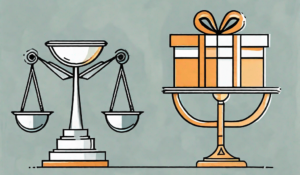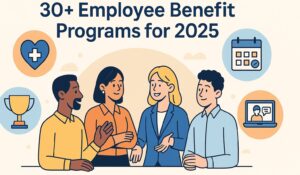Employee recognition plays a crucial role in fostering a positive work environment and motivating employees to perform at their best. One effective way to recognize and reward employees is through the use of monetary rewards, monetary benefits, and monetary incentives. This article explores the various benefits of these financial rewards in the workplace and discusses their impact on motivation, performance, and overall employee satisfaction, while also highlighting best practices and linking to deeper resources.
👉 Learn more about how technology supports recognition programs in our employee recognition software guide.
Understanding Monetary Rewards
Definition of Monetary Rewards
Monetary rewards are financial incentives provided to employees in recognition of their achievements or contributions to the organization. These can include bonuses, salary increases, commissions, profit-sharing, or stock options. By offering tangible financial benefits, employers directly acknowledge and appreciate their employees’ efforts.
Monetary rewards play a crucial role in motivating employees and driving their performance. When employees receive these incentives, it not only recognizes their hard work but also reinforces positive behavior and encourages them to continue excelling in their roles. These rewards help organizations attract, retain, and engage top talent in a highly competitive job market.
Furthermore, monetary rewards and monetary benefits provide employees with a sense of financial security and stability. This stability reduces stress and allows employees to focus more on their work and personal growth.
According to a Gallup study, organizations that effectively reward and recognize employees see a 31% reduction in turnover and a 41% increase in employee engagement.
Different Types of Monetary Rewards
- Performance-Based Bonuses – tied to individual, team, or company-wide goals; encourage collaboration and promote a culture of excellence.
- Annual Salary Increases – linked to performance reviews; provide a sense of progression and investment in future growth.
- Profit-Sharing Programs – align employees’ interests with company success; foster ownership and accountability.
- Other Financial Incentives – commissions, performance-based stock options, or spot awards that keep employees engaged.
👉 For more ideas, explore employee reward ideas.
The Psychological Impact of Monetary Rewards
Motivation and Productivity
- Motivators: Tap into employees’ intrinsic desire for financial security and personal fulfillment.
- Behavioral Reinforcement: Operant conditioning shows financial incentives reinforce positive behavior.
- Psychological Benefits: Recognition plus compensation enhances self-confidence and self-efficacy.
A McKinsey report found that financial incentives are consistently ranked among the top three factors influencing employee motivation and productivity.
Employee Satisfaction and Retention
- Monetary rewards and incentives foster loyalty and build a positive emotional connection with the company.
- According to equity theory, fairness in financial rewards and benefits boosts job satisfaction.
- Financial recognition improves team morale and encourages collaboration.
👉 To understand the balance between financial and other motivators, see intrinsic and extrinsic rewards.
Monetary Rewards and Performance
Monetary rewards directly impact individual performance. Financial incentives and monetary benefits motivate employees to meet and exceed performance targets, often leading to improved productivity and higher quality of output.
Healthy competition also emerges, pushing employees to take ownership of their work. This competitive spirit, when paired with monetary incentives, results in greater commitment and better outcomes.
In fact, a Harvard Business Review study highlights that well-structured incentive plans can increase employee performance by up to 44%.
Influence on Team Performance
When entire teams are rewarded, it strengthens collaboration and camaraderie. Shared financial incentives create a positive, results-driven culture where individuals support one another while striving toward collective goals.
This combination of motivation and teamwork makes monetary incentives a powerful driver of productivity at both the individual and group levels.
👉 Learn how to design a complete system in our guide to employee reward systems.
Implementing a Monetary Reward System
Designing an effective monetary reward program requires careful planning:
- Clear Criteria – measurable, transparent, and aligned with company objectives.
- Transparency – employees must understand how rewards are calculated.
- Support & Training – provide resources so employees can achieve targets.
- Regular Reviews – adapt programs as organizational goals evolve.
Potential challenges include avoiding vague criteria and ensuring fairness. Training and development opportunities help employees succeed and stay engaged.
By combining monetary rewards, monetary benefits, and monetary incentives, companies can create programs that feel comprehensive, fair, and motivating.
👉 Explore examples of recognition structures in employee recognition programs.
The Long-Term Effects of Monetary Rewards
Employee Loyalty and Company Culture
- Financial recognition builds strong emotional bonds with the organization.
- Encourages healthy competition and inspires others to achieve recognition.
- Can reinforce cultural values by linking rewards and benefits to behaviors such as teamwork or customer service.
Financial Sustainability and Growth
- Motivated employees deliver better customer service and innovation.
- Competitive monetary incentives attract and retain top talent, reducing hiring costs.
- Lower turnover and improved morale lead to long-term financial sustainability.
A SHRM report shows that organizations with strong reward systems are more likely to report higher financial performance and improved talent retention.
Alternatives to Monetary Rewards
While monetary rewards are powerful, non-monetary recognition can be equally impactful:
- Public Recognition: Shout-outs, award ceremonies.
- Flexibility: Remote work, flexible schedules.
- Growth: Training, mentorship, career development.
- Extra Time Off: Simple but valued.
A balanced approach—combining both monetary and non-monetary recognition—creates a comprehensive strategy that addresses diverse employee needs.
👉 For ideas on spotlighting employees, check out employee spotlight questions and examples.
How Software Platforms Help
Tracking and managing rewards can be complex. That’s where tools like an employee recognition platform come in. They simplify administration, ensure fairness, and provide actionable data on engagement and performance.
For organizations designing holistic programs, consider reviewing our guide to employee recognition software for best practices and solutions.

Conclusion
Monetary rewards, benefits, and incentives provide tangible motivation and reinforce positive workplace culture. When combined with thoughtful recognition strategies and technology platforms, they drive engagement, retention, and business success.
To make the most impact, organizations should:
- Combine financial incentives with non-monetary recognition for a holistic strategy.
- Leverage employee recognition software to track, measure, and improve reward effectiveness.
- Align reward structures with company values and goals to strengthen culture.
- Continuously review and adjust programs to remain competitive and fair.
👉 Learn how to strengthen your recognition culture in our article on employee appreciation ideas.
FAQs
What are examples of monetary rewards?
Examples include performance bonuses, annual raises, commissions, stock options, profit-sharing programs, and other structured monetary incentives.
How do monetary rewards differ from monetary benefits?
Monetary rewards are typically tied to performance or achievements (like bonuses), while monetary benefits are ongoing financial perks such as health stipends, retirement contributions, or allowances.
Are monetary incentives effective for all employees?
Not always. While monetary incentives motivate many, others may respond better to non-monetary recognition like career development opportunities, flexible schedules, or public recognition.
How can companies balance monetary and non-monetary rewards?
Organizations should design a comprehensive system that combines both. For example, pairing financial incentives with career growth, mentorship, and recognition programs creates a more sustainable engagement strategy.
What role does software play in managing monetary rewards?
Employee recognition software streamlines administration, ensures fairness, provides transparency, and generates data-driven insights to optimize reward programs that include monetary rewards, benefits, and incentives.













